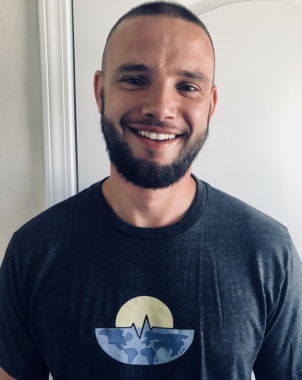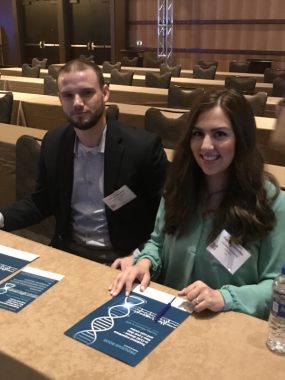Guidelines for Diseases Like Batten Are Small Nonprofit’s Guiding Goal

hafakot/Shutterstock
Care Beyond Diagnosis is a small nonprofit run by a team of three, but it is taking on a large task for the rarest of rare diseases by focusing on clinical guidelines that make it easier for doctors to treat patients with these disorders.
In April, it released the first clinical guidelines for CLN2, also known as late infantile Batten disease, which were published in the Orphanet Journal of Rare Diseases. The organization enlisted 21 experts in the CLN2 disease space in a three-year process to provide recommendations on 13 topics ranging from general disease descriptions to pain management to end-of-life care.

Jeffrey Donohue poses for a portrait in 2018. (Photo by Yanique Donohue)
“We just want recommendations for as many rare diseases as possible to be validated and published so parents have more validated and available information,” Jeffrey Donohue, the group’s co-founder, said in a phone interview with his wife, Yanique Donohue, the organization’s other co-founder.
What makes Care Beyond Diagnosis different from other organizations is that some money received by grants for creating clinical guidelines goes toward small donations to people with rare diseases in developing nations. It recently bought a hearing aid for a rare disease patient in Bangladesh, and between 2018 and 2020, it supported a Zimbabwean charity, Rare Diseases and Disabilities Africa Foundation, started by Tinotenda Mudarikwa, who has a rare disease called imperforate anus, which causes a person to be born with either an absent or abnormally placed anus.
Care Beyond Diagnosis came out of Yanique’s experience with her younger brother, who as an infant would lapse in and out of comas, and eventually was paralyzed on the right side of his body. While he recovered from the mysterious illness, identified as a lysosomal storage disorder, it forced her and her family to move from South Africa in 1996 to the U.K. to get better care, and she never quite adapted to the change.
“I’ve always had this feeling that was so unfair, and there’s got to be another way to do this,” Yanique Donohue said from North Carolina, where she and her husband, and their three kids now live. The idea that families should have the right to high-quality care regardless of where they live inspired Yanique to start the foundation in 2016. “We knew we wanted to help patients with rare diseases, specifically in developing countries.”
Attending the 2017 WORLDSymposium in San Diego, which focuses on research into lysosomal diseases, and meeting other families changed Jeffrey Donohue’s perspective and led him to jump headfirst into the organization his wife was building.
“It’s just this wonderful community of people wanting to make a difference for others, given how grim the situation might be for their own family members. That is really inspiring,” Donohue said.
He quit his job, where he was in charge of national retail accounts for an Italian tile manufacturer, to become project manager for guidelines at Care Beyond Diagnosis.
After learning more about what the clinical guidelines process entailed from Yanique’s father, a doctor with a metabolic specialty who runs a for-profit medical education company, and from other experts in the field, Donohue started work on the CLN2 guidelines in 2018.

Jeffrey and Yanique Donohue at the WORLDSymposium Orlando in February 2019. (Photo courtesy of Jeffrey Donohue)
He landed on Batten disease because it already had an approved enzyme replacement therapy, Brineura (cerliponase alfa) by BioMarin, but lacked validated guidance that could help get it into the hands of the people who needed it. The U.K. at that time did not cover treatment for a disease that “steals childhood from a child and families,” Donohue said. He saw a need, and Care Beyond Diagnosis stepped in to fill it.
Guidelines need to be independent and transparent to be well received by the medical community, so Donohue ensured that the organization played a facilitating role in discussions among clinicians, researchers, and patient advocates rather than a leading role.
He also employed an expert mapping tool that selected the best group of people based on the number of publications they’ve been involved with, how frequently they’ve been cited, and their involvement in scientific and patient advocacy conferences. From that group, two co-chairs were selected to lead the process of making the guidelines; they always had the final word. A 21-person steering committee of experts to advise, lead, and drive the program was also formed.
The co-chairs then uploaded clinical care questions or statements about the disease, based on a literature review, to a virtual engagement platform called Within3 for discussion by the steering committee. Experts commented on the initial 73 statements drafted by the co-chairs, wherever they were. In two weeks, they had left 1,100 comments. Donohue says this virtual system has helped the organization keep costs low by not having to cover travel expenses for steering committee members.
Further discussion reduced those 73 statements to 54 in 13 different domains. Healthcare providers recommended by the steering committee then validated those statements on a 10-point scale, with one meaning totally disagree and 10 meaning strongly agree. The steering committee attempted to get geographic representation from clinicians around the world, as Care Beyond Diagnosis’ primary mission is to improve quality of care for developing nations.
Once the statements — or as Donohue describes, the “bones” of the guidelines — are verified, medical writers draft a manuscript and submit it to journals. For Batten disease, the co-chairs decided that Orphanet would be the best place to publish these guidelines.
The final step in the process employs an AGREE II assessment, which scores the guidelines based on scope and purpose, stakeholder involvement, rigor of development, clarity of presentation, applicability, and editorial independence. That assessment gave the Care Beyond Diagnosis guidelines a 5.7 out of 7. According to Donahue, it’s the highest score to date for a rare disease guideline.
Focusing on creating these guidelines for rare diseases plays a pivotal role in the mission of Care Beyond Diagnosis to improve quality of life for all patients, regardless of location.
“We really just want to share as much as we can with other advocacy groups to kind of nudge them a little bit to take up guideline development on their own as well, because it can really make a difference for a patient and for families battling to get their patient the best chance,” Donohue said.
Now, some three months after publication, Donohue is focused on tracking the distribution of these recommendations to ensure they reach the people he is trying to help. And as for making them more widely available, Donohue is leveraging the network of the 21-member steering committee and the co-chairs to effectively disseminate the information.
Care Beyond Diagnosis will continue to publish guidelines to help rare disease patients and families have a clear medical path once treatments become available. And with more than 7,000 known rare diseases, that work will likely never cease. The organization is in the process of drafting guidelines for CLN3 disease, also known as juvenile Batten disease.
“Once you have a treatment and once you understand the disease, you need to have that third piece of validated recommendations, just so there aren’t any more obstacles from when an onset of symptoms start for a patient,” Donohue said.






